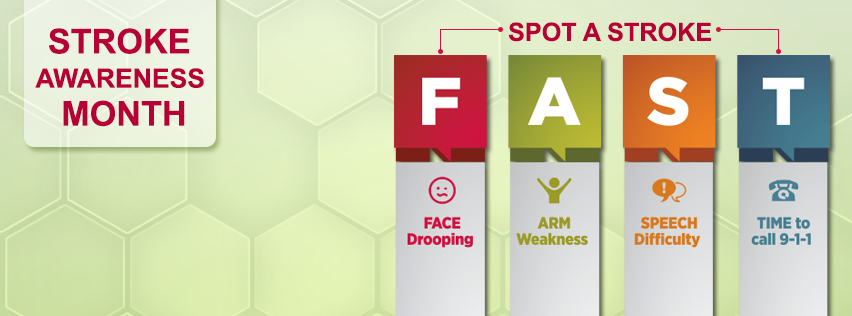
FAST – Stroke Awareness
PUBLIC SERVICE ANNOUNCEMENT
Stroke is the No. 4 killer in this country and is the leading cause of long-term disability. In the United States, it is estimated that someone has a stroke every 40 seconds. Eighty percent of strokes are preventable.
To prevent stroke, know your risk factors and have regular medical checkups. Some risk factors can be changed and some cannot. While you can’t change your age, heredity, or race – for example, African Americans have a higher risk of stroke than Caucasians, you can change lifestyle factors such as the way you eat or stopping tobacco use. Other risk factors that you can control include managing high blood pressure, managing diabetes, lowering cholesterol, using alcohol in moderation, and increasing physical activity.
Stroke is highly treatable if detected early. The faster you are treated, the more likely you are to recover and the less likely you are to suffer from long-term disabilities. Stroke patients who received the clot-busting drug alteplase (IV r-tPA) within 90 minutes of symptom onset were almost three times more likely to recover with little or no disability.
The first step is recognizing the symptoms of stroke. Symptoms that can suddenly occur include: weakness or numbness in the face, arms, or legs particularly on one side of the body; confusion; trouble seeing out of one or both eyes; difficulty walking; dizziness or loss of coordination; and a severe headache with no known cause.
According to stroke experts at the Cooper Neurological Institute, the acronym F.A.S.T. was developed nationally as an easy way to remember and identify what to look for:
F: Face drooping. Ask person to smile. Is it uneven?
A: Arm weakness or numbness. Ask person to raise both arms. Does one arm drift down?
S: Speech difficulty or slurred. Ask person to repeat simple sentence. Are they unable to repeat it?
T: Time to call 9-1-1. Call immediately even if symptoms subside. Note what time symptoms began.
Remember, if a stroke is suspected, call 9-1-1 immediately. Fast action is key when it comes to stroke survival.
Learn more about the Cooper Neurological Institute and our Certificate of Distinction for Primary Stroke Centers from The Joint Commission by clicking here.

May Is Stroke Awareness Month. Know the Signs and Symptoms of Stroke! – Weekly Rounds
[…] risk factors and have regular medical checkups. Some risk factors can be changed and some cannot. Click here to learn more about what you can do to prevent stroke, and the symptoms to look for if you suspect […]